A Family At War Episode Guide is essential for enthusiasts seeking detailed information about this iconic series. CONDUCT.EDU.VN provides comprehensive insights into this show, exploring its historical context, characters, and significant events. Delve into episode summaries, character arcs, and behind-the-scenes details, enhancing your appreciation for this compelling drama and offering valuable lessons about family ethics.
1. Introduction to A Family At War
A Family At War is a British television drama series that aired from 1970 to 1972. Created by John Finch and produced by Granada Television, the series chronicles the lives of the Ashton family in Liverpool, England, from 1938 to 1945, during World War II. The show provides a realistic depiction of how the war affected ordinary families, exploring themes of love, loss, resilience, and societal change.
1.1. Historical Context
The series is set against the backdrop of World War II, one of the most significant events in modern history. The war began in September 1939 when Nazi Germany invaded Poland, leading Britain and France to declare war on Germany. The conflict involved numerous countries and resulted in immense human suffering and global upheaval.
1.1.1. Pre-War Tensions
The late 1930s were marked by increasing political tensions in Europe. Adolf Hitler’s rise to power in Germany and his aggressive expansionist policies created a climate of fear and uncertainty. The failure of appeasement policies by Britain and France ultimately led to the outbreak of war.
1.1.2. The Impact of World War II
World War II had a profound impact on British society. The war effort required significant sacrifices from the civilian population, including rationing, conscription, and enduring air raids. The war also led to significant social changes, such as increased opportunities for women in the workforce and a greater emphasis on social welfare.
1.2. The Ashton Family
A Family At War revolves around the Ashton family, who live in Liverpool. The family consists of:
- Edwin Ashton: The patriarch of the family, Edwin is a manager at a printing company. He is a thoughtful and decent man who tries to hold his family together during the war.
- Jean Ashton: Edwin’s wife, Jean, is a strong and supportive woman who faces the challenges of wartime with courage and resilience.
- Margaret Ashton: The eldest daughter, Margaret, is a schoolteacher. Her personal life is complicated by the war, and she faces difficult choices about love and family.
- Freda Ashton: The younger daughter, Freda, is an independent and spirited young woman. She navigates her own path during the war, seeking both love and personal fulfillment.
- David Ashton: The eldest son, David, is a flight sergeant in the Royal Air Force (RAF). His experiences in the war deeply affect him and his family.
- Philip Ashton: The middle son, Philip, is an intellectual and idealist. He volunteers to fight in the Spanish Civil War and later serves in the British Army.
- Robert Ashton: The youngest son, Robert, joins the Royal Navy as a teenager. His youth and inexperience are tested by the harsh realities of war.
The series “A Family at War” explores the challenges faced by families during wartime, emphasizing resilience and societal changes.
1.3. Themes Explored in the Series
A Family At War explores several significant themes:
- The Impact of War on Families: The series vividly portrays how the war disrupts family life, causing separation, loss, and emotional strain.
- Love and Relationships: The characters grapple with love, marriage, and relationships amidst the chaos of war. The series explores how wartime conditions affect personal connections.
- Social Change: The war brings about significant social changes, including shifts in gender roles, class structures, and attitudes towards authority.
- Resilience and Adaptation: The Ashton family demonstrates remarkable resilience in the face of adversity. They adapt to changing circumstances and find ways to cope with the challenges of war.
- Moral Dilemmas: The characters face difficult moral choices as they navigate the complexities of wartime. The series explores the ethical implications of war and its impact on individual conscience.
2. Detailed Episode Guide
A Family At War consists of four series, totaling 52 episodes. Each episode offers a unique perspective on the war and its impact on the Ashton family. Here’s a detailed episode guide:
2.1. Series 1 (1970)
Series 1 introduces the Ashton family and sets the stage for the war. The episodes cover the period from 1938 to 1940, highlighting the growing tensions in Europe and the initial impact of the war on Liverpool.
| Episode Number | Episode Title | Original Air Date | Summary |
|---|---|---|---|
| 1 | 1938 | April 26, 1970 | Introduces the Ashton family in Liverpool and their lives before the war. |
| 2 | September 3rd, 1939 | May 3, 1970 | Britain declares war on Germany, and the Ashton family prepares for the challenges ahead. |
| 3 | Lines of Battle | May 10, 1970 | Margaret’s wedding takes place against the backdrop of impending war. |
| 4 | Four Strategic Reasons | May 17, 1970 | Philip is stationed in Guernsey before the German invasion. |
| 5 | Now You’re in the Army | May 24, 1970 | Focuses on the experiences of young men joining the army. |
| 6 | To Die For Spain | May 31, 1970 | Flashbacks reveal Philip’s involvement in the Spanish Civil War. |
| 7 | I Have Done With Shadows | June 7, 1970 | Explores the emotional impact of war on relationships. |
| 8 | Keep Smiling Through | June 14, 1970 | The Ashton family tries to maintain morale during the early months of the war. |
| 9 | The Night They Hit No. 8 | June 21, 1970 | Liverpool experiences a devastating bombing raid. |
| 10 | Over the Top | June 28, 1970 | David’s experiences as a flight sergeant in the RAF. |
| 11 | Home Fires | July 5, 1970 | Focuses on the challenges faced by women on the home front. |
| 12 | The War Comes Home | July 12, 1970 | The Ashton family deals with the increasing impact of the war on their daily lives. |
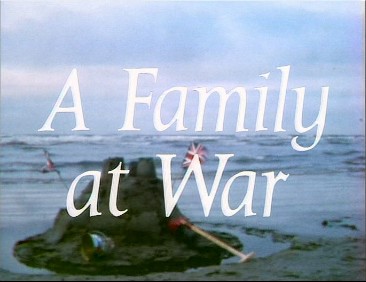
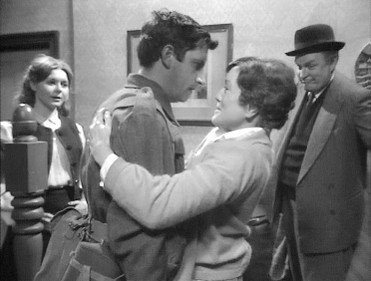
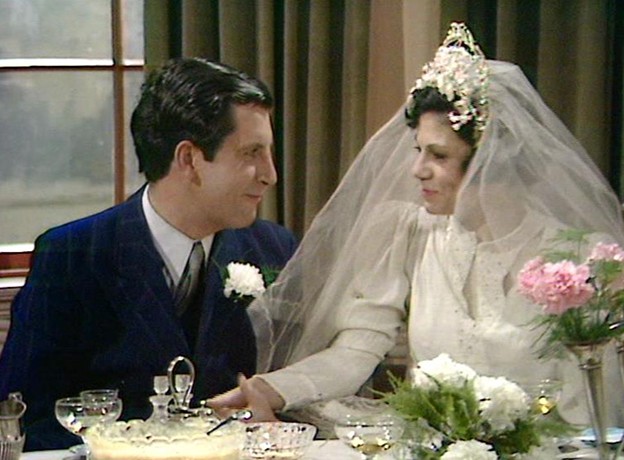
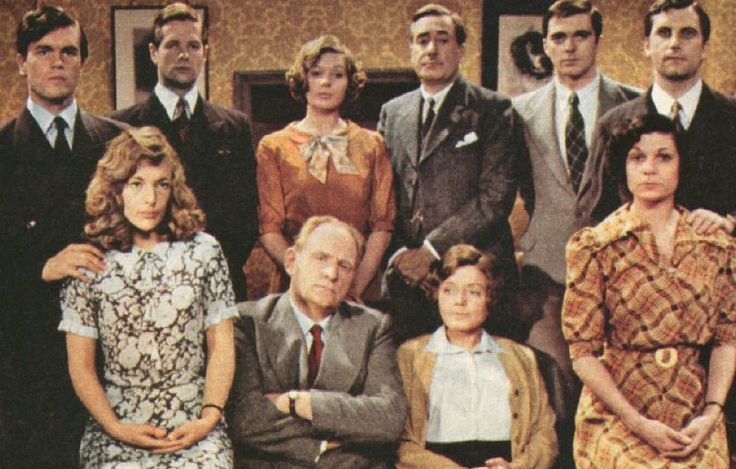
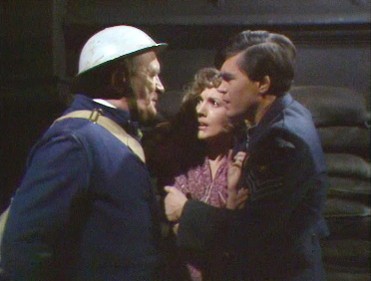
2.2. Series 2 (1971)
Series 2 covers the period from 1940 to 1941, a time of intense bombing raids and increasing hardship for the British people.
| Episode Number | Episode Title | Original Air Date | Summary |
|---|---|---|---|
| 13 | December 1940 | April 8, 1971 | The Ashton family spends Christmas amidst the ongoing bombing raids. |
| 14 | I Can Be Happy, Can’t I? | April 15, 1971 | Focuses on the women in the Ashton family as they cope with the challenges of wartime. |
| 15 | A Lesson In War | April 22, 1971 | Philip is stationed in North Africa and experiences the harsh realities of desert warfare. |
| 16 | Is Your Journey Really Necessary | April 29, 1971 | Explores the impact of travel restrictions and rationing on daily life. |
| 17 | One of Ours | May 6, 1971 | David participates in a bombing raid over Germany. |
| 18 | Believed Killed | May 13, 1971 | The Ashton family receives news that a loved one is missing in action. |
| 19 | The Prodigal Son | May 20, 1971 | A family member returns home after a long absence. |
| 20 | The Things We Do | May 27, 1971 | Explores the moral dilemmas faced by individuals during wartime. |
| 21 | Hazard | June 3, 1971 | Philip encounters an unpleasant sergeant in North Africa who expresses racist views. |
| 22 | I Will Sing You No Sad Songs | June 10, 1971 | The Ashton family tries to find moments of joy amidst the hardship of war. |
| 23 | The Price You Pay | June 17, 1971 | Focuses on the financial struggles faced by families during wartime. |
| 24 | March 1941 | June 24, 1971 | The Ashton family endures another intense period of bombing raids. |
2.3. Series 3 (1971-1972)
Series 3 covers the period from 1942 to 1944, as the tide of the war begins to turn in favor of the Allies.
| Episode Number | Episode Title | Original Air Date | Summary |
|---|---|---|---|
| 25 | Winter 1942 | December 9, 1971 | The Ashton family faces a harsh winter and continues to cope with rationing and shortages. |
| 26 | The Questioning Summer | December 16, 1971 | Explores the changing attitudes towards relationships and morality during wartime. |
| 27 | Appointment in London | December 23, 1971 | A family member travels to London on a critical mission. |
| 28 | The Island | December 30, 1971 | A remote island becomes a place of refuge for members of the Ashton family. |
| 29 | The Road to Freedom | January 6, 1972 | Focuses on the growing resistance movements in occupied Europe. |
| 30 | The Home Front Offensive | January 13, 1972 | The Ashton family contributes to the war effort on the home front. |
| 31 | A Different Kind of Victory | January 20, 1972 | David meets a German pilot and is conflicted, seeing that he is not so different from himself. |
| 32 | The Bells of Hell | January 27, 1972 | The sounds of church bells invoke a sense of sorrow and fear for the Ashton family. |
| 33 | The Lonely Killers | February 3, 1972 | The Ashton family faces violence in their daily life. |
| 34 | September 1943 | February 10, 1972 | The Ashton family receives news that a loved one is missing in action. |
| 35 | One Small Step | February 17, 1972 | Focuses on the financial struggles faced by families during wartime. |
| 36 | One Sunday Morning | February 24, 1972 | The Ashton family endures an intense period of bombing raids. |
2.4. Series 4 (1972)
Series 4 covers the final years of the war, from 1944 to 1945, as the Allies close in on Germany and the war finally comes to an end.
| Episode Number | Episode Title | Original Air Date | Summary |
|---|---|---|---|
| 37 | The Invasion Year | March 2, 1972 | The Ashton family prepares for the expected Allied invasion of Europe. |
| 38 | The Longest Day | March 9, 1972 | D-Day arrives, and the Ashton family anxiously awaits news from the front. |
| 39 | After the Storm | March 16, 1972 | Explores the aftermath of the D-Day landings and the ongoing war in Europe. |
| 40 | The Empty Houses | March 23, 1972 | The sounds of church bells invoke a sense of sorrow and fear for the Ashton family. |
| 41 | The Shadow of Doubt | March 30, 1972 | The Ashton family faces violence in their daily life. |
| 42 | The Price of Victory | April 6, 1972 | The Ashton family receives news that a loved one is missing in action. |
| 43 | The Homecoming | April 13, 1972 | Focuses on the financial struggles faced by families during wartime. |
| 44 | The Silent World | April 20, 1972 | The Ashton family struggles to communicate after the war. |
| 45 | The Best Years | April 27, 1972 | The Ashton family struggles to move on after the war. |
| 46 | The Promised Land | May 4, 1972 | The Ashton family struggles to communicate after the war. |
| 47 | The Aftermath | May 11, 1972 | The Ashton family struggles to move on after the war. |
| 48 | The Future Beckons | May 18, 1972 | The Ashton family looks forward to a brighter future after the war. |
| 49 | A Faint Refrain | May 25, 1972 | Margaret’s lover, Michael, returns from the war and is confronted by her husband, John. |
| 50 | Two Fathers | June 1, 1972 | Set in Germany among the rubble, this episode explores the terrible conditions for German kids and defeated civilians. |
| 51 | Aftermath | June 8, 1972 | The Ashton family deals with the aftermath of the war and tries to rebuild their lives. |
| 52 | Christmas Day 1945 | June 15, 1972 | The series concludes with the Ashton family celebrating Christmas and looking forward to a more peaceful future. |
Episodes like “Believed Killed” vividly depict the emotional toll of war on families, highlighting the uncertainty and grief experienced by those left behind.
3. Memorable Characters and Their Arcs
A Family At War features a cast of well-developed characters who evolve throughout the series. Here’s a closer look at some of the most memorable characters and their arcs:
3.1. Edwin Ashton
Edwin Ashton, played by Colin Douglas, is the patriarch of the Ashton family. He is a thoughtful and decent man who works as a manager at a printing company. Edwin is a steadying presence for his family, providing guidance and support during the war.
3.1.1. Challenges Faced
Edwin faces numerous challenges throughout the series, including:
- Maintaining his family’s morale during the war.
- Dealing with the financial pressures of wartime.
- Coping with the loss and separation caused by the war.
3.1.2. Character Development
Edwin’s character develops as he learns to adapt to the changing circumstances of the war. He becomes more resilient and resourceful, and he emerges as a strong leader for his family.
3.2. Jean Ashton
Jean Ashton, played by Shelagh Fraser, is Edwin’s wife and the matriarch of the Ashton family. She is a strong and supportive woman who faces the challenges of wartime with courage and resilience.
3.2.1. Contributions to the Family
Jean makes significant contributions to the family, including:
- Providing emotional support for her children.
- Managing the household during wartime.
- Working to support the war effort on the home front.
3.2.2. Character Development
Jean’s character evolves as she becomes more independent and self-reliant. She learns to cope with the absence of her sons and the dangers they face, and she emerges as a pillar of strength for her family.
3.3. Margaret Ashton
Margaret Ashton, played by Lesley Nunnerley, is the eldest daughter of Edwin and Jean. She is a schoolteacher who faces difficult choices about love and family during the war.
3.3.1. Romantic Entanglements
Margaret’s personal life is complicated by the war. She becomes involved in a love triangle and must choose between her duty to her family and her own happiness.
3.3.2. Character Development
Margaret’s character develops as she learns to make difficult decisions and take responsibility for her own actions. She becomes more independent and self-assured, and she emerges as a strong and capable woman.
3.4. David Ashton
David Ashton, played by Colin Campbell, is the eldest son of Edwin and Jean. He is a flight sergeant in the RAF and experiences the horrors of war firsthand.
3.4.1. Wartime Experiences
David’s wartime experiences deeply affect him. He witnesses the death and destruction caused by the war and struggles to cope with the emotional toll.
3.4.2. Character Development
David’s character evolves as he learns to confront his fears and accept the realities of war. He becomes more courageous and compassionate, and he emerges as a hero in his own right.
3.5. Philip Ashton
Philip Ashton, played by Keith Drinkel, is the middle son of Edwin and Jean. He is an intellectual and idealist who volunteers to fight in the Spanish Civil War and later serves in the British Army.
3.5.1. Ideological Conflicts
Philip is driven by his strong sense of justice and his belief in fighting for what is right. He faces ideological conflicts as he grapples with the complexities of war and politics.
3.5.2. Character Development
Philip’s character develops as he learns to temper his idealism with pragmatism. He becomes more aware of the nuances of human behavior and the challenges of implementing his ideals in the real world.
Margaret’s wedding in “Lines of Battle” symbolizes the personal lives affected by the war, showcasing the impact of historical events on individual relationships.
4. Key Themes and Ethical Considerations
A Family At War raises several key themes and ethical considerations that are relevant to contemporary society. These include:
4.1. The Morality of War
The series explores the moral complexities of war, raising questions about the justifications for violence, the treatment of civilians, and the ethical responsibilities of soldiers.
4.1.1. Just War Theory
The concept of just war theory, which seeks to define the conditions under which war is morally permissible, is relevant to the themes explored in the series. Just war theory emphasizes the importance of having a just cause, using proportionate means, and minimizing harm to non-combatants.
4.1.2. Ethical Dilemmas
The characters in A Family At War face numerous ethical dilemmas, such as whether to obey orders that conflict with their conscience, whether to risk their lives for a cause they believe in, and how to balance their duty to their country with their responsibility to their families.
4.2. The Impact of War on Mental Health
The series realistically portrays the psychological impact of war on soldiers and civilians alike. Characters struggle with trauma, grief, and anxiety, highlighting the importance of mental health care and support.
4.2.1. Post-Traumatic Stress Disorder (PTSD)
The concept of PTSD, which was not well understood during World War II, is relevant to the experiences of characters who have witnessed traumatic events. PTSD can cause a range of symptoms, including flashbacks, nightmares, and emotional numbing.
4.2.2. Coping Mechanisms
The characters in A Family At War develop various coping mechanisms to deal with the stress and trauma of war. These include seeking support from family and friends, finding solace in religion, and engaging in creative activities.
4.3. The Role of Women in Wartime
The series highlights the significant contributions of women to the war effort, both on the home front and in the military. Women take on new roles and responsibilities, challenging traditional gender norms and paving the way for greater equality.
4.3.1. Women in the Workforce
The war creates new opportunities for women in the workforce, as men are called away to fight. Women work in factories, farms, and offices, filling essential roles and demonstrating their capabilities.
4.3.2. Changing Gender Roles
The war leads to significant changes in gender roles, as women take on traditionally male responsibilities. This shift challenges traditional notions of masculinity and femininity and contributes to a more egalitarian society.
5. The Enduring Appeal of A Family At War
A Family At War remains a popular and critically acclaimed television series due to its realistic portrayal of wartime life, its well-developed characters, and its exploration of universal themes.
5.1. Authenticity and Realism
The series is praised for its authenticity and realism. The creators paid close attention to historical details, ensuring that the costumes, sets, and dialogue accurately reflected the period.
5.1.1. Historical Accuracy
The series strives for historical accuracy, depicting the events of World War II and their impact on British society in a realistic and nuanced way.
5.1.2. Relatable Characters
The characters in A Family At War are relatable and believable. They face the same challenges and dilemmas as ordinary people, making it easy for viewers to empathize with their struggles.
5.2. Universal Themes
The series explores universal themes that resonate with audiences across generations. These themes include:
- Love and Loss: The characters experience love, loss, and heartbreak, just like people in real life.
- Courage and Resilience: The characters demonstrate remarkable courage and resilience in the face of adversity.
- Family and Community: The series emphasizes the importance of family and community in times of crisis.
5.3. Social and Cultural Impact
A Family At War had a significant social and cultural impact when it originally aired. The series sparked conversations about the war, its impact on society, and the importance of remembering the sacrifices made by previous generations.
5.3.1. Remembrance and Commemoration
The series encourages viewers to remember and commemorate the events of World War II and the sacrifices made by those who fought and died.
5.3.2. Understanding History
A Family At War provides valuable insights into the history of World War II and its impact on British society. The series helps viewers understand the complexities of the war and its lasting legacy.
The ensemble cast of “A Family at War” allowed the series to explore a wide range of perspectives on the war, from those on the front lines to those struggling on the home front.
6. Frequently Asked Questions (FAQs)
-
What is A Family At War about?
A Family At War is a British television drama series that chronicles the lives of the Ashton family in Liverpool, England, from 1938 to 1945, during World War II.
-
How many episodes are there in A Family At War?
There are 52 episodes in A Family At War, spread across four series.
-
Who created A Family At War?
A Family At War was created by John Finch.
-
When did A Family At War originally air?
A Family At War originally aired from 1970 to 1972.
-
What are the main themes explored in A Family At War?
The main themes explored in A Family At War include the impact of war on families, love and relationships, social change, resilience and adaptation, and moral dilemmas.
-
Who are the main characters in A Family At War?
The main characters in A Family At War include Edwin Ashton, Jean Ashton, Margaret Ashton, Freda Ashton, David Ashton, Philip Ashton, and Robert Ashton.
-
Is A Family At War historically accurate?
Yes, A Family At War is praised for its historical accuracy and realistic portrayal of wartime life.
-
What is the enduring appeal of A Family At War?
The enduring appeal of A Family At War lies in its authenticity and realism, its exploration of universal themes, and its social and cultural impact.
-
Where can I watch A Family At War?
A Family At War is available on DVD and may be available on various streaming platforms. Check your local listings for availability.
-
How does A Family At War reflect the ethical considerations of wartime?
The series portrays the moral complexities of war, raising questions about the justifications for violence, the treatment of civilians, and the ethical responsibilities of soldiers, prompting viewers to consider these issues.
7. Conclusion: A Timeless Depiction of Wartime Life
A Family At War remains a timeless depiction of wartime life, offering valuable insights into the challenges, sacrifices, and triumphs of ordinary people during extraordinary times. By exploring the lives of the Ashton family, the series provides a nuanced and compelling portrait of a world at war.
For more in-depth information about rules of conduct and ethical guidelines in various aspects of life, please visit CONDUCT.EDU.VN. Our website offers resources that can help you navigate complex ethical dilemmas and make informed decisions. Contact us at 100 Ethics Plaza, Guideline City, CA 90210, United States, or reach out via WhatsApp at +1 (707) 555-1234.
Episodes showing air raid wardens highlight the constant threat and the community’s efforts to protect themselves, capturing the everyday realities of wartime.
Disclaimer: CONDUCT.EDU.VN aims to provide accurate and up-to-date information. However, ethical standards and guidelines can vary, and professional advice should be sought for specific situations.
Navigating the complexities of ethical decision-making can be daunting. Don’t face it alone. Visit conduct.edu.vn today for the guidance you need to make informed and ethical choices.

